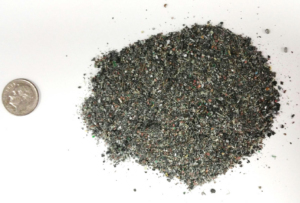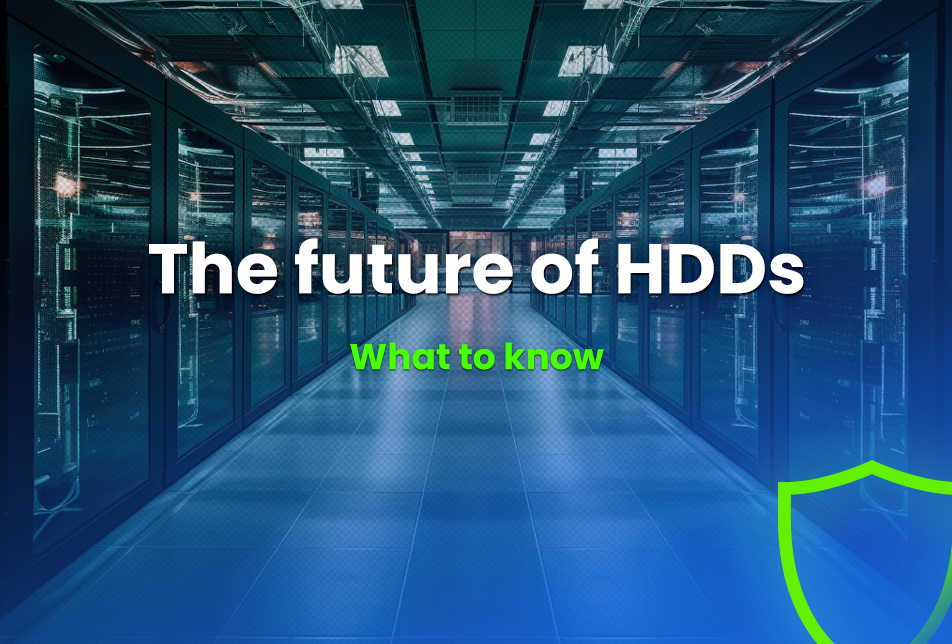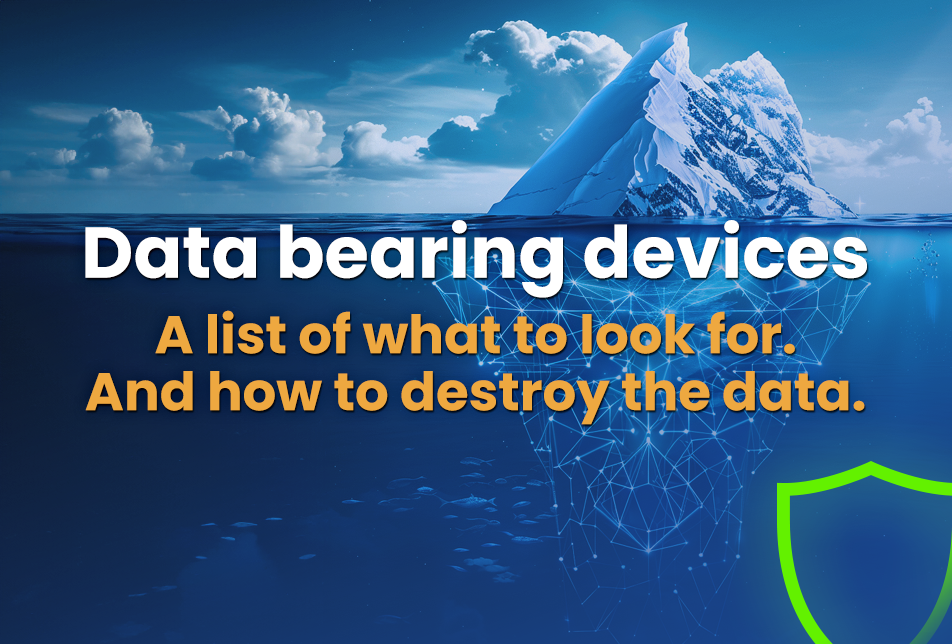Are you someone who was sure that old-fashioned platter hard disk drives were on their way out to be universally replaced by the petite, sassy and lightweight solid state drive?

Sure SSDs have taken over laptops and desktops for good reason: costs are down and amenable for smaller capacities, their read/write speed is 2-3x faster than spinning disks, their overall weight is close to nothing and their size is adorably tiny (causing a potential big security problem like this).
But. SSDs are not always optimal for data centers for a few “solid” reasons:
- HDDs have a significantly lower price point than SSDs, especially at higher capacities.
- HDDs are persistent i.e., they last much longer so keeping data indefinitely is ok.
- HDDs can withstand constant read/write without degradation.
- HDDs don’t degrade when hitting maximum terabytes written (TBW) limits.
- HDDs (generally) indicate EOL and have data recovery options.
How to increase data center white space with future-facing hard disk drive technology

With a seemingly never-ending quest for more and more data storage and space efficiency, data center architects wonder, “How can I increase my white space capacity without increasing my footprint?”
Be like New York City, get denser. Because SSDs aren’t always a good fit for data centers, density is the aim of the latest innovations in HDD design:

- Available now: HAMR
Heat-assisted magnetic recording uses a second on-board actuator paired with laser-powered heat to reduce the disk’s magnetic hardness as it writes data (Read more: Seagate’s “What is HAMR” >)

- In development: MAMR
Microwave-assisted magnetic recording uses 20-40GhZ frequency to create circular microwave fields that lower the disk’s surface resistance as it writes data (Read more: Western Digital’s MAMR Tech Brief>)
Most importantly, these newfangled hard drives can double or triple capacity without changing form factor. Right now, the future of new HDDs may not be quite plug-and-play but, for large data centers, it’s now possible to exchange 3.5” large form factor 3TB drives for 6TB drives. And, when you’re talking cloud storage, that is an option that is far more cost-effective than building a new data center. You’re effectively doubling or tripling capacity with an HDD upgrade.
Is there secure data destruction for HAMR and MAMR HDD drives?
As an EOL data destruction service provider, new technology is on our radar because we are the final checkpoint for data security. For existing platter hard drives, our recommendations for secure data destruction options remain the same:
- Erasure – the best data destruction method for ESG compliance, reuse and high-value equipment
- Hard drive shredding from 20mm – 2mm. The data is obliterated into small pieces and the Gaylord bins of shred go to the nearest or designated R2 or e-Stewards recycler. Shred is the recommended data destruction method when either the erasure process fails or for older and non-functioning hard drives.
- NSA degaussing for HDDs is required for classified information followed by shredding.
For anyone considering or purchasing new tech, high-capacity HDD innovations, IT Asset Managers, security professionals and CTOs should be aware of HAMR and MAMR data destruction options. And monitor because it is evolving as both the technology is rolled out and data sanitization standards are applied:

- HAMR HDDs
- Are not degaussable.
- Due to the highly concentrated data capacity in the same physical space as a standard hard drive (from 2TB to 20-40 TB per square inch), we recommend 2mm shred (pulverization) to ensure complete data destruction.
- Erasure will be determined (likely a new standard that will replace NIST).
- MAMR HDDs
- May be degaussable (TBD) but are unlikely to meet NSA guidelines.
The only constant is change. HDDs and data centers are no exception.
Five years ago, it was clear that hard drives were going away. But with a new approach big, spinning hard drives are here to stay in data centers because of the distinct advantages they offer over SSDs. Therefore we must be prepared to implement the latest generation because…it’s already here. That means creating a data destruction plan to protect the data and your company when your new equipment reaches EOL.
Guardian Data Destruction is working in varying data center setups across the country. We are there for the decommissioning, data destruction, packing and logistics of the retired hard drives. As a rule, data destruction services fall a few years behind the purchasing trends but we are already seeing data centers installing these super high-capacity hard drives without hesitation. New technology solves the capacity/white space.
How does new HDD technology affect IT asset managers?
The drive to increase space efficiency and profit is neverending. As an example, SSDs now include lots of form factors like PCIE and M.2 and multiple read/write technologies. (See our Data Storage Guide here and what happens when you don’t know what flash data storage your data center is using here.) Expect more development to come there, too.
As new technology products are purchased, integrate them fully into your comprehensive data destruction program including manufacturer recommendations. As more and more of the technology is adopted, update your plan with the latest information on secure data protection for EOL, lease return and redeployment (HAMR erasure will eventually be possible) so that you can make the most secure choice.
There’s risk of a data breach from a single, unprotected or disregarded 6TB (or 1 TB) HDD or SSD. Whether it’s a migration, decommission, upgrade, downgrade or consolidation, Guardian includes a tailored mashup of complementary services to ensure that there is no gap in security: chain of custody, audits, verifications, factory reset to default, crating, white glove packing, secure logistics, EOL packing and recycling, re-installations, data destruction and more. New technology isn’t an exception – just fold it into the process.
If you’re considering a move to HAMR (or MAMR) and have some concerns or ideas about data destruction planning, we’d like to talk to you! In the meantime, Guardian Data Destruction is available for hard drive shredding, pulverization and mutilation as well as the erasure of many flavors including remote, enterprise and hyper-scaled. And, we’re here to help you with your data center decommissioning, migrations and transport.



